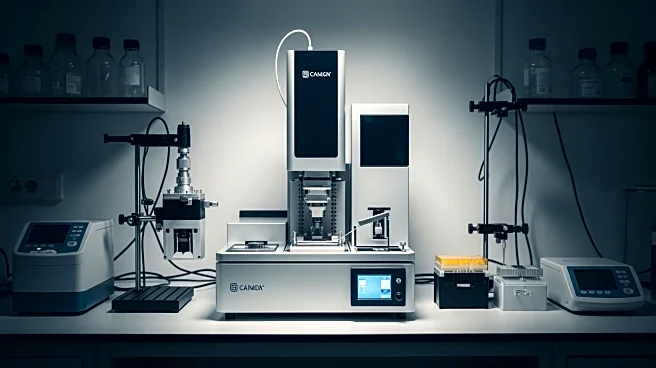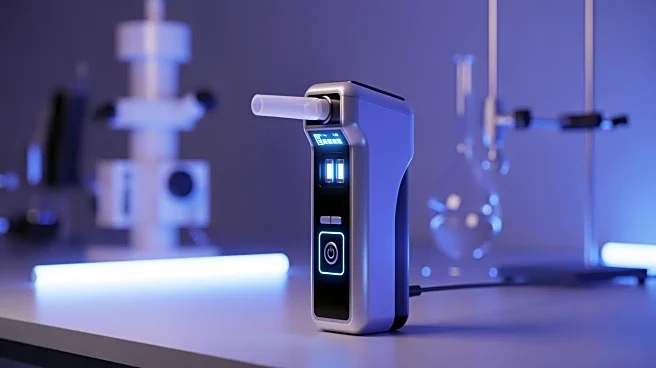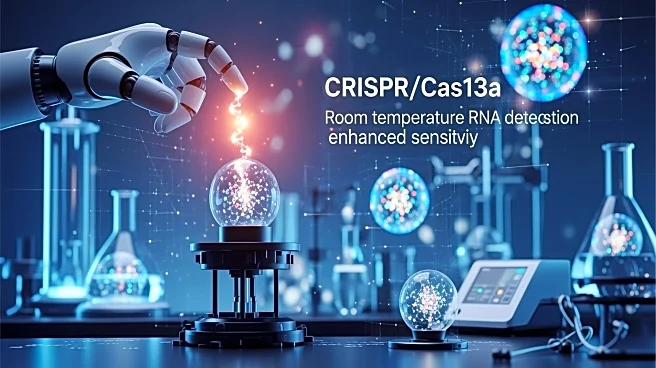What's Happening?
A new diagnostic method, the CRISPR anti-tag-mediated room-temperature RNA detection assay (CARRD), has been developed using CRISPR/Cas13a technology. This assay streamlines RNA detection by eliminating
the need for nucleic acid amplification and reverse transcription, operating effectively at room temperature. The CARRD assay uses a CRISPR anti-tag hairpin to inhibit the activation of Cas13a's trans-cleavage reaction, allowing for sensitive and specific RNA detection. Despite its advantages, the assay's accuracy can be compromised by background noise levels influenced by the design of the CRISPR anti-tag hairpin, necessitating further optimization for clinical applications.
Why It's Important?
The development of the CARRD assay represents a significant advancement in diagnostic technology, particularly for resource-limited settings. By operating at room temperature and eliminating complex handling steps, the assay reduces costs and simplifies the diagnostic process, making it more accessible for field testing. This could have a profound impact on public health, enabling quicker and more efficient detection of RNA viruses such as HIV and HCV. However, the need for further optimization to minimize background noise is crucial to ensure the assay's reliability and specificity in clinical applications.
What's Next?
Future work on the CARRD assay will focus on optimizing the design of the CRISPR anti-tag hairpin to reduce background noise and improve accuracy. Researchers may also explore the assay's application in detecting other RNA viruses and its potential integration into point-of-care diagnostic tools. The success of these developments could lead to widespread adoption of the CARRD assay in clinical settings, transforming the landscape of RNA virus detection.
Beyond the Headlines
The CARRD assay's ability to operate at room temperature without the need for complex equipment could democratize access to advanced diagnostic tools, particularly in developing countries. This innovation may also prompt ethical discussions about the accessibility and affordability of cutting-edge medical technologies, as well as the potential for misuse in non-clinical settings.











